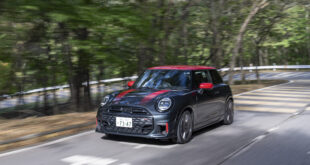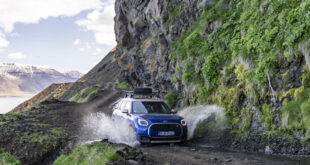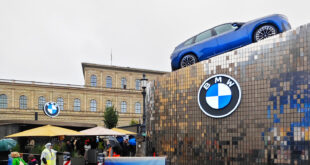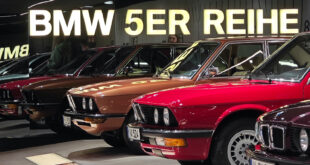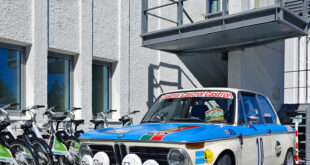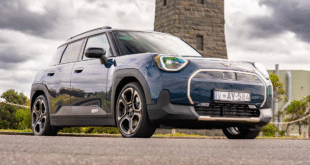Stirling Moss, Jackie Stewart, Bruce McLaren, Phil Hill, Carroll Shelby, Ken Tyrrell, Steve McQueen, Enzo Ferrari, David Bowie, Paul Smith, Kate Moss, all four of the Beatles, and even Juan Manuel Fangio. If my opening title didn’t already give it away, these are just a handful of the illustrious figures who, in one way or another, have crossed paths with the Cooper Car Company or its iconic Classic Mini incarnations.
With such a pedigree and provenance, it’s almost surprising that more enthusiasts don’t know the stories behind the company or the remarkable cars it produced. After all, this was the workshop that not only shaped the course of Formula One history but also helped democratise performance for the everyday driver through the Mini Cooper. It was a place where innovation met accessibility, where world-beating racing machines and humble city cars shared the same spirit of agility and character. Yet for all its achievements, the Cooper Car Company’s story is often overshadowed, remembered only in fragments, a racing trophy here, a cheeky little Mini there.



To step (or drive) into its world today is to uncover a lineage far richer, and far more influential, than most give it credit for. And today, that’s exactly where we’re headed. To the beautiful and incredibly picturesque home of John Cooper’s son and grandson, Mike and Charlie Cooper.

Walking onto their homegrounds was akin to stepping into a living museum, except with the added warmth of being guided by the family themselves. Tales of the Cooper Car Company don’t come second-hand here, they’re told by those who lived it and continue to preserve it.

Of course, to really appreciate the significance of any Cooper racing car, you have to look back to the late 1950s, when John Cooper and his small Surbiton-based team quite literally turned the world of motorsport upside down. Until then, the accepted wisdom was that racing cars had their engines up front. As Enzo Ferrari famously said, “The horses pull the car, not push it”.
Then came the Cooper T43 and T51, compact little machines with their engines mounted behind the driver. It was a radical idea at the time, one that most of the establishment scoffed at and never believed would work. But when Stirling Moss and Jack Brabham started winning Grands Prix in Coopers, the rest of the paddock had no choice but to follow. In just a few seasons, the mid-engined layout became the new standard, a foundation of Formula 1 design that endures to this very day.



And standing before under the beautiful afternoon sun was a car born of that legacy: Jackie Stewart’s Cooper T72, the very machine in which a young Scotsman first announced himself to the world. By the time of the T72 in 1964, mid-engined Coopers were no longer the underdog’s gamble but the proven formula, and what made this car so special was how it refined that concept for Formula 3. With its light, stiff spaceframe, sharp suspension geometry, and beautifully balanced handling, it was the perfect training ground for rising stars. Stewart himself would later remark that the T72 played a pivotal role in convincing him he could make it at the very top.

For most of us, simply looking at its lithe, almost fragile construction was enough to give us goosebumps, a shared mix of fear, admiration, and awe for the brave souls who once dared to race these machines at the very edge of their limits.



And yet, standing there amongst these racing icons, the conversation naturally shifted from track to road. Before us was a carefully curated selection of the Cooper family’s Mini collection, ranging from an original Mark II Cooper S to a fully stripped-out (and very fruity-sounding) classic racer, a cheekily plated GP3, and even a van converted to electric power, proving that even the originators of the classic Mini Cooper are not averse to electric propulsion.




The contrast was fascinating: the same philosophy of lightweight, driver-focused engineering that made Cooper racing cars legendary had been distilled into the playful, endlessly charismatic road-going Minis.
I’m certain there’s really not much need to go into exhaustive detail about this truly ingenious machine, one that, for many, isn’t just a car, but an icon that transcends the automotive world. Launched in 1959 and conceived by Sir Alec Issigonis, the Mini was born from necessity: a compact, efficient solution to Britain’s post-war fuel shortages. Yet at the hands of a certain Mr John Cooper, it quickly became so much more.



Already an accomplished racing car builder at the time, Mr Cooper saw the Mini’s potential; he realised that beneath its diminutive exterior lay the makings of a true performance machine. Collaborating with Issigonis, Cooper tuned the Mini’s engine, suspension, and brakes, giving birth to the Mini Cooper, a car that could dominate rally stages while retaining all the charm and agility of the original design. With its transverse engine and front-wheel-drive layout, maximised interior space, and low weight, the Mini Cooper delivered handling that was nothing short of phenomenal. It wasn’t just fast around corners; it was agile, playful, and instantly engaging, qualities that made it a darling on the racetrack and later, the streets.
With its cheerful, cheeky styling and engaging driving characteristics, the Classic Mini’s impact soon extended far beyond engineering. It became a symbol of 1960s British culture, embraced by everyone from mod gangs to movie stars, musicians, and fashion icons. Its charm and accessibility helped it infiltrate pop culture in ways few cars ever could, even today, from appearances in films like The Italian Job(s) to the rise of the Mini Cooper as a motorsport legend in rallying, where it famously took on and beat much larger competitors. The Cooper family’s engineering genius ensured that the car’s small footprint and lightweight construction translated directly to a competitive edge, while also inspiring generations of enthusiasts to prioritise clever design and driving enjoyment over sheer horsepower, a trait that survives even in today’s Minis.

From rally stages to city streets, and from fashion shoots to music videos, the Mini Coopers have left an indelible mark on both automotive history and popular culture. And as we’ve discovered with our drive of Lilibet, it’s a car that doesn’t just get you from A to B, it makes every journey memorable, a tiny but mighty ambassador of fun, ingenuity, and enduring style. As we walked among the classic Minis and legendary T72 up close. It felt like a rare privilege, one that few journalists, and even fewer enthusiasts, will ever get to experience firsthand. It’s a memory that will linger long after the engines have cooled and the gates have closed, a true celebration of history, passion, and the enduring spirit of the original Mini Cooper. Thank you, Mike and Charlie Cooper, for being such gracious hosts.
But before I wrap up our visit, there’s just one more thing to show. Stay tuned.
 BMW.SG | BMW Singapore Owners Community The Ultimate BMW Community – Established Since 2001
BMW.SG | BMW Singapore Owners Community The Ultimate BMW Community – Established Since 2001

